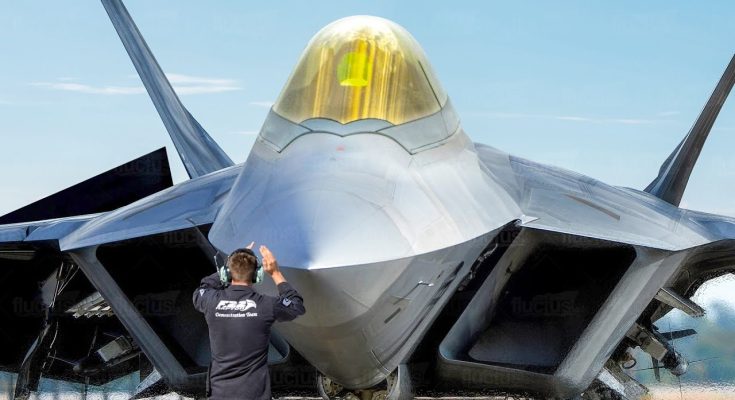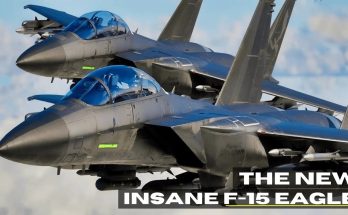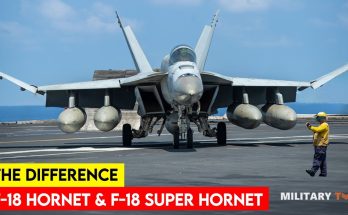US President Trump Unveils New F-47 Fighter Jet to Replace F-22 Raptors
In a groundbreaking announcement that has sent shockwaves through both military and aviation circles, President Donald Trump has unveiled the new F-47 fighter jet, designed to replace the iconic F-22 Raptor in the U.S. Air Force’s fleet. The F-47 is being touted as a quantum leap forward in terms of performance, technology, and air combat capabilities, incorporating the latest advancements in stealth, speed, AI integration, and autonomous operations. This new fighter is set to redefine air superiority and cement the U.S. military’s dominance in the skies for the decades to come.
A New Era of Air Combat: The F-47’s Capabilities
The F-22 Raptor, hailed as one of the most advanced fighter jets in history, has long been the cornerstone of U.S. air superiority. However, with rapidly advancing adversarial technologies and a shifting landscape of global threats, there has been a growing need for an aircraft that can outpace not only the F-22, but also next-generation threats. The F-47 promises to do just that, introducing capabilities that go far beyond those of its predecessors.
-
Enhanced Stealth Technology
The F-47 takes stealth technology to the next level, incorporating a blended fuselage design with advanced radar-absorbing materials. Unlike the F-22, which relies on a combination of radar-absorbing coatings and shaping, the F-47 is equipped with next-generation adaptive radar-absorbing materials (RAMs) that can change their properties dynamically to further minimize its radar cross-section (RCS). This means the F-47 can avoid detection by the most advanced enemy radar systems, ensuring it remains undetectable in contested airspace.
Additionally, the aircraft’s heat signature has been significantly reduced with the integration of cooled exhaust nozzles and infrared stealth technologies, which makes the F-47 virtually invisible to infrared tracking systems.
-
Supercruise and Hypersonic Speeds
While the F-22 Raptor can achieve supersonic speeds, the F-47 is designed with supercruise capabilities in mind — allowing it to fly at supersonic speeds for extended periods without using afterburners. This provides significant fuel efficiency and increases operational range, allowing the F-47 to conduct long-range missions without the need for frequent refueling.
Furthermore, the F-47 will have hypersonic capabilities, with potential speeds exceeding Mach 5 (3,836 mph). These speeds allow the F-47 to outrun any current or potential adversary’s air defenses, ensuring the U.S. maintains complete air dominance in any theater of combat.
-
AI-Powered Combat Systems and Autonomous Flight
One of the most exciting features of the F-47 is its artificial intelligence (AI)-driven combat systems. Unlike its predecessors, the F-47 will utilize AI-powered decision-making to assist pilots in real-time combat scenarios. This AI will not only analyze threats and targets faster than human pilots but also make tactical recommendations based on real-time data from the aircraft’s sensors, as well as external intelligence feeds.
Moreover, the F-47 will have a high degree of autonomy, allowing it to conduct missions with minimal human intervention. The aircraft can be deployed in situations where piloted flights may be too risky or impractical, such as in environments with high levels of enemy electronic warfare or anti-aircraft threats.
-
Next-Gen Weaponry
The F-47 is expected to carry a wide array of next-generation weapons, with a focus on precision, range, and flexibility. This includes hypersonic missiles, directed energy weapons (DEWs), and advanced air-to-air and air-to-ground munitions. The F-47 is also expected to feature internal weapons bays, similar to the F-35 Lightning II, which will allow it to carry a variety of munitions while maintaining its stealth profile.
Among the key weapons systems, the F-47 will likely be equipped with hypersonic cruise missiles capable of striking high-value targets at extreme ranges. Additionally, the fighter may carry laser weapons for missile defense and target neutralization, adding a new layer of offensive and defensive capability to its already formidable arsenal.
-
Unmatched Situational Awareness
The F-47 will feature advanced sensor fusion technology, integrating data from its radar, infrared, and electronic warfare systems to provide the pilot with a comprehensive, real-time view of the battlespace. This 360-degree situational awareness will be crucial for successful engagements in dense, contested environments, where the ability to detect and engage multiple threats is vital.
Its augmented reality cockpit will provide the pilot with intuitive, hands-free access to all necessary systems, allowing for voice and gesture controls while in combat. The heads-up display (HUD) will be equipped with predictive algorithms that assist the pilot in targeting and evading enemy systems, making the F-47 one of the most advanced pilot interfaces ever developed.
-
Stealth and EW Countermeasures
In addition to its stealth features, the F-47 is expected to be equipped with an advanced suite of electronic warfare (EW) countermeasures. These will include active jamming systems, decoys, and cyber defense systems designed to disrupt or disable enemy radar, communication, and targeting systems.
This multi-layered defense will help the F-47 stay ahead of adversaries who may try to use emerging technologies such as anti-stealth radar or cyber-attacks to target the fighter. The combination of stealth, EW, and AI ensures that the F-47 will be capable of operating in highly contested and dynamic environments, including in high-intensity conflict zones.
Strategic Implications: The Future of Air Superiority
The F-47’s unveiling marks the beginning of a new chapter in U.S. air combat capabilities. As the replacement for the F-22 Raptor, the F-47 is designed to not only exceed the capabilities of its predecessor but also to provide a quantum leap in air superiority, long-range strike capabilities, and multi-domain operations.
-
Global Reach and Deterrence
With its hypersonic capabilities and advanced stealth features, the F-47 will ensure that the U.S. remains the dominant force in air combat, able to strike anywhere in the world, at any time, and under any conditions. It will serve as a powerful deterrent against potential adversaries, ensuring that the U.S. military remains a formidable force on the global stage.
-
Integration with Existing U.S. Forces
The F-47 will be seamlessly integrated into existing U.S. Air Force operations, working alongside other advanced platforms like the F-35, B-21 Raider, and U.S. Navy aircraft. Its advanced communication and AI capabilities will enable cross-platform coordination, allowing it to work in joint operations with land, sea, and air forces, creating a truly multi-domain fighting force.
-
Expanding U.S. Technological Superiority
The development of the F-47 also sends a powerful message about the U.S.’s commitment to maintaining its technological superiority over adversaries. By embracing cutting-edge technologies such as AI, hypersonic weapons, and directed-energy systems, the U.S. ensures that it remains at the forefront of military innovation and air combat dominance for the foreseeable future.
Conclusion: A Game-Changer for Air Power
The F-47 fighter jet is poised to redefine what is possible in air combat. With its combination of advanced stealth, hypersonic speeds, AI-powered systems, and next-gen weaponry, the F-47 will not only replace the F-22 Raptor but will also establish a new standard for air superiority and global deterrence. As the U.S. continues to face evolving threats in an increasingly complex global security environment, the F-47 will serve as a key enabler of dominance in the skies, ensuring that the U.S. Air Force remains the most capable and powerful force in the world.



